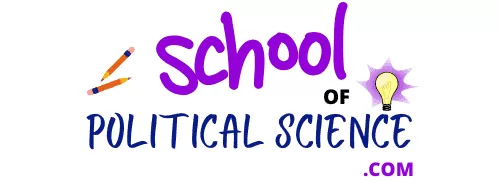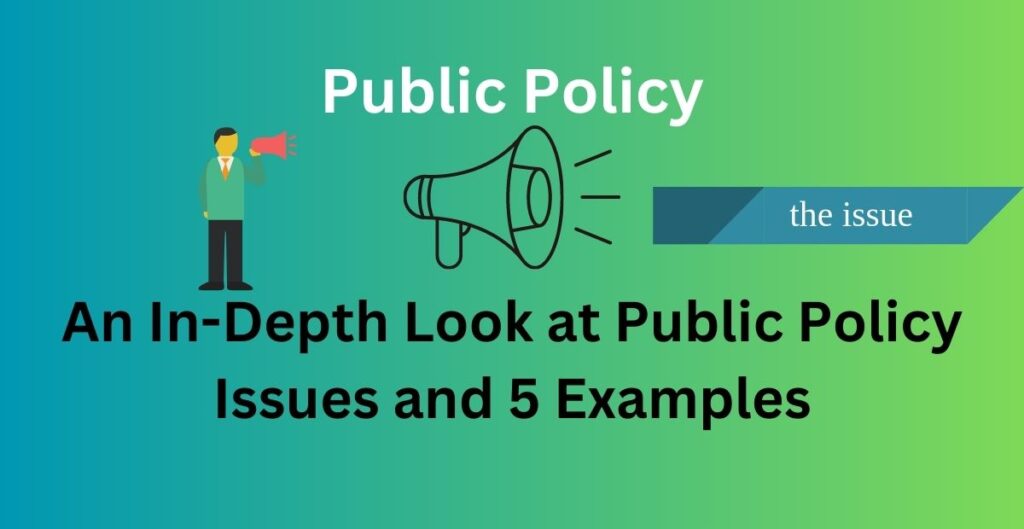Public policy issues encompass a wide range of challenges that societies face and require government intervention to address them. These issues can vary in nature and scope, covering areas such as social, economic, environmental, and governance-related concerns. Public policy plays a vital role in identifying, analyzing, and implementing strategies to tackle these issues effectively. Let’s explore public policy with definition and some examples of public policy issues to gain a better understanding:
Public Policy Definition
Public policy is a broad term that refers to the decisions taken by a government in order to address specific public issues, such as taxation, healthcare, education, and infrastructure. Public policy is typically created through a process of political decision-making involving legislators, government officials, and policy analysts. The goal of public policy is to promote the collective well-being of citizens, businesses, and society as a whole.
It refers to the decisions, actions, and guidelines adopted by governments to promote public welfare, address societal issues, and achieve specific goals. Public policy encompasses a wide range of areas, including economic development, social welfare, education, healthcare, environmental protection, and more.
Must Read- Exploring the 8 Essential Characteristics of Public Policy
It involves a systematic process of policy formulation, implementation, and evaluation, drawing upon research, stakeholder consultations, and political considerations.
By setting the direction and framework for governance, public policy influences the allocation of resources, the provision of public services, and the overall well-being of individuals and communities. Effective public policy is essential for tackling pressing issues, promoting social justice, fostering economic growth, and ensuring a sustainable future.
Public Policy examples
- Universal Healthcare: This policy aims to provide healthcare coverage and services to all citizens of a country or region. It typically involves the establishment of a government-run healthcare system or the expansion of existing public healthcare programs. Universal healthcare policies strive to ensure that everyone has access to necessary medical care, regardless of their financial means or pre-existing conditions.
- Gun Control: Gun control policies focus on regulating the manufacture, sale, possession, and use of firearms. These policies vary widely across countries and jurisdictions, but they often include background checks for gun buyers, restrictions on certain types of weapons, waiting periods, and licensing requirements. The goal of gun control policies is to enhance public safety, reduce gun-related violence, and prevent unauthorized access to firearms.
- Minimum Wage: Minimum wage policies establish a legally mandated wage floor that employers must pay to their workers. The minimum wage is typically set by the government and varies depending on the region or industry. The purpose of minimum wage policies is to ensure that workers receive a fair and livable wage, promote income equality, and protect vulnerable workers from exploitation.
- Environmental Regulations: Environmental regulations are policies that aim to protect the environment, natural resources, and public health. These regulations can cover various areas, such as air and water quality standards, waste management, emissions controls, and conservation efforts. The objective of environmental regulations is to prevent pollution, mitigate climate change, preserve ecosystems, and promote sustainable practices.
- Education Reform: Education reform policies focus on improving the quality and accessibility of education systems. These policies may include changes to curriculum standards, teacher training and evaluation, school funding, and the promotion of innovative teaching methods. Education reform policies aim to enhance educational outcomes, reduce achievement gaps, and equip students with the necessary skills for future success.
It’s important to note that these examples represent a small fraction of the numerous public policies that exist, and policies can vary significantly across different countries and regions.
Must Read- The Crucial Link Between Public Policy and Administration
Public Policy Issues
Public policy issues encompass a wide range of challenges and concerns that societies face. Here are five examples of public policy issues that are commonly addressed by governments and policymakers:
- Climate Change and Environmental Sustainability: Climate change poses significant threats to ecosystems, natural resources, and human well-being. Public policy efforts focus on mitigating greenhouse gas emissions, promoting renewable energy sources, preserving biodiversity, and implementing sustainable practices to combat climate change and ensure environmental sustainability.
- Income Inequality and Poverty: Addressing income inequality and poverty is a crucial public policy issue. Governments work to design and implement policies such as progressive taxation, social welfare programs, minimum wage regulations, and job creation initiatives to reduce poverty, narrow income gaps, and ensure equitable distribution of resources.
- Healthcare Access and Affordability: Public policy plays a vital role in ensuring access to quality healthcare services for all individuals. Policies focus on expanding healthcare coverage, improving healthcare infrastructure, regulating pharmaceutical costs, promoting preventive care, and addressing health disparities among different populations.
- Education Quality and Access: Public policy efforts are directed toward improving the quality of education and ensuring equitable access for all individuals. Policies focus on enhancing teacher training, curriculum development, school infrastructure, and increasing educational opportunities for marginalized communities, thereby fostering inclusive and quality education.
- Cybersecurity and Data Privacy: With the rapid growth of digital technologies, cybersecurity, and data privacy have become significant policy concerns. Governments work to establish regulations and standards to protect individuals, businesses, and critical infrastructure from cyber threats, while also safeguarding personal data and ensuring privacy rights.
- Immigration: Crafting policies to address immigration challenges, including comprehensive immigration reform, border security measures, and pathways to citizenship for undocumented immigrants.
- Criminal Justice Reform: Develop policies to address issues of mass incarceration, promote rehabilitation over punishment, and reduce recidivism rates through initiatives like sentencing reform, diversion programs, and police accountability measures.
Must Read- Importance of Public Policy-10 Points Need to Know
These examples highlight the diverse and pressing nature of public policy issues. Effective public policy requires thorough analysis, stakeholder engagement, and evidence-based decision-making. It involves balancing competing interests, considering long-term implications, and promoting the overall welfare of society. Ultimately, successful public policy strives to create a more just, equitable, and sustainable future for all.
Conclusion
In conclusion, public policy issues are complex challenges that societies face and require careful consideration and action. They encompass a wide range of areas, from healthcare and education to environmental protection and economic regulation. These issues often involve competing interests and values, making the policymaking process challenging and demanding. However, public policy is essential for shaping the direction of society and addressing its most pressing problems.
Let me share with you what you have learned from “An In-Depth Look at Public Policy Issues and 5 Examples“.

